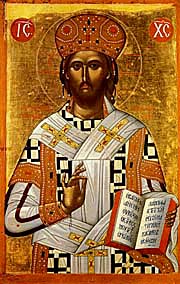The Institute for Christian Formation

Laetare Sunday: Fourth Sunday of Lent
Follow us on Facebook to keep up to date with our news and newest resources!
Rejoice! It’s Laetare Sunday! The Fourth Sunday of Lent is called Laetare Sunday. The Latin word “laetare” means “rejoice.” Laetare Sunday takes its name from the first words of the Entrance Antiphon for the Fourth Sunday of Lent, “Rejoice, Jerusalem…” During the liturgy this Fourth Sunday of Lent, you will also notice other differences from our usual Lenten liturgical celebrations. The presider may be wearing rose colored vestments, rather than the usual Lenten violet vestments. This is an option in the Roman Missal. And whereas the Roman Missal forbids flowers decorating the altar and the use of musical instruments except to support singing during Lent, both are permissible on Laetare Sunday and Lenten Solemnities and Feasts. (Reference -Roman Missal, page 70 paragraph 4; page 106, copyright 2011 by Catholic Book Publishing Corp., New Jersey.)
Simnel Cake

Jerusalem is a city in the Holy Land, but is also often referred to as the “Heavenly City” or “Mother Church.” It became a custom in England for people to return to their “Mother Church” on Laetare Sunday. This may have been the Cathedral, or even the church of their baptism.
Ancient Romans had celebrated a pagan festival at the time of the vernal equinox to celebrate Cybele, mother of the gods. With the spread of Christianity, Christians began to translate this celebration into a Laetare Sunday celebration where, in addition to honoring the “Mother Church,” they also specially honored Mary, the Mother of Jesus. Soon the custom in England was to honor all mothers on Laetare Sunday, and this day began to be called “Mothering Sunday” in England. As young people left home to work on manor estates, and with the Industrial Revolution to take jobs in the larger cities, Laetare Sunday was often the only day of the year where they were free to return home and visit their families. These young people would travel home for Laetare Sunday, often attending Mass at their home, or “Mother Church,” and bringing a gift for their mothers. This gift was often flowers and a special cake, called a “Simnel Cake.” This cake was somewhat like a fruitcake, and was traditionally topped with eleven small marzipan balls symbolizing the eleven faithful disciples.

“Simila” is the Latin word for wheat flour, hence the name of the Simnel Cake. But there is another tradition that is a bit more interesting. This story says there was a couple named Simon and Ellen who baked this type of cake, and that the cake’s name comes from the abbreviation of their two names!
While today, Simnel Cakes are often prepared for Easter in Great Britain (hence the “chicks” on the cake in this photo), the Simnel Cake is still the most traditional recipe associated with Laetare Sunday. So as we rejoice this year on Laetare Sunday, bake a Simnel Cake for your Sunday dinner. Here is one
Click on image above to download our ICF handout, "Laetare Sunday: Fourth Sunday of Lent."
Set your table this Fourth Sunday of Lent with a rose colored tablecloth and a vase of fresh flowers. After celebrating Mass enjoy Sunday brunch or dinner, topped off with a slice of Simnel Cake. Rejoice, Jerusalem!
Invite children to make a "Spiritual Bouquet" for Mom, Grandma, their Godmother, etc. Have the children decorate the front of the card with light pink roses, and include a note with a promise to pray for the recipient on this Laetare Sunday and throughout this Fourth Week of Lent. Deliver the note with a rose and a simnel cupcake!
